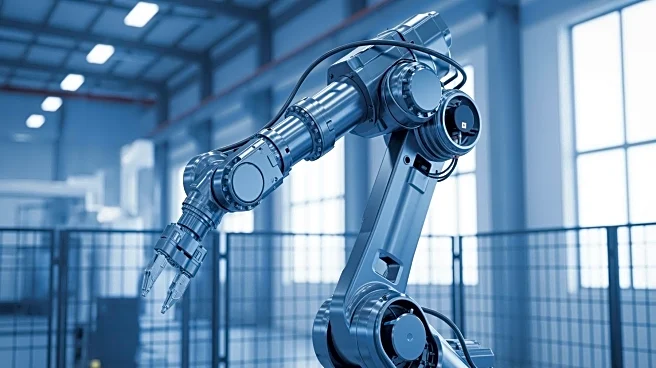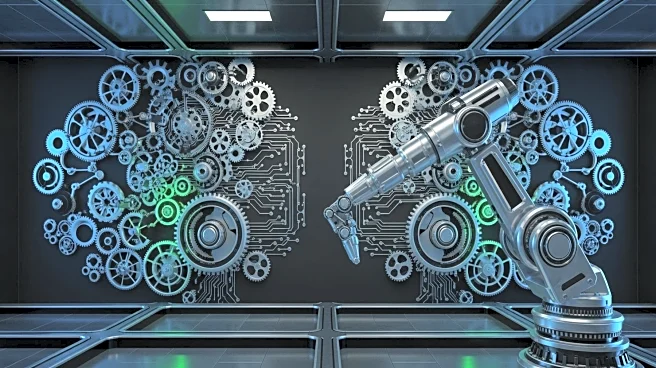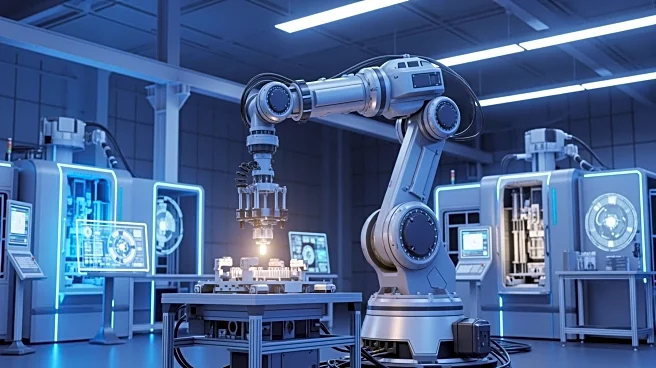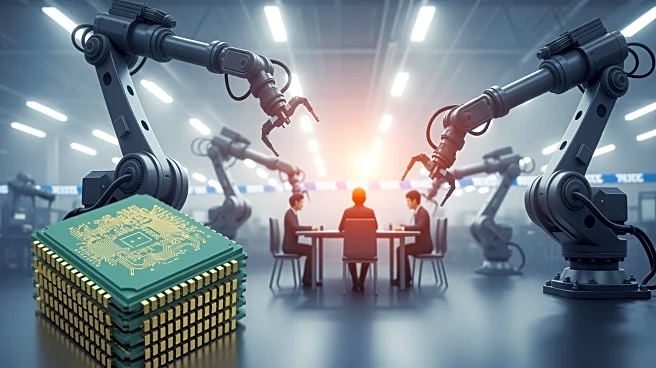What's Happening?
China has achieved a significant milestone in the industrial robotics sector, with the production of 595,000 industrial robotic arms in the first nine months of 2025. This represents a substantial increase, aligning with a broader trend of growth in the country's
automation industry. According to the International Federation of Robotics, China now operates more industrial robots than any other country, with its stock surpassing 2 million units in 2024. The country accounted for over half of all new global installations in 2024, deploying 295,000 of the world's 542,000 new industrial robots. This growth is supported by both international companies like ABB, which invested $150 million in a Shanghai factory, and domestic firms such as Siasun and Estun Automation, which benefit from government initiatives like 'Made in China 2025'.
Why It's Important?
The surge in China's industrial robotics production has significant implications for the global market. As China solidifies its position as the largest market for industrial robots, it challenges the dominance of traditional leaders like Japan, Germany, and Switzerland. The competitive pricing and local service advantages of Chinese manufacturers are reshaping the market dynamics, allowing them to capture a larger share of the domestic and international markets. This shift could lead to increased competition and innovation in the global robotics industry, potentially affecting industries reliant on automation, such as automotive and aerospace. The rise of Chinese robotics also reflects broader economic trends, including supply chain diversification and technological advancement.
What's Next?
Looking ahead, the global industrial robotics market is expected to become more stratified and competitive. While foreign companies will continue to dominate high-end applications, Chinese firms are likely to consolidate their hold on the mass market and expand their global presence. This expansion is already evident, with Chinese exports of industrial robots increasing by nearly 60% in the first half of 2025. As Chinese companies continue to innovate and leverage cost advantages, they are poised to challenge established players on the world stage, potentially leading to a redefined balance of power in industrial automation.
Beyond the Headlines
The rapid growth of China's robotics industry highlights the country's strategic focus on technological self-sufficiency and economic modernization. This development is part of a broader effort to reduce reliance on foreign technology and enhance domestic capabilities. The success of Chinese robotics firms also underscores the effectiveness of government policies aimed at fostering innovation and industrial growth. As these companies expand globally, they may face challenges related to intellectual property rights and international trade regulations, which could influence their long-term success and the global competitive landscape.















